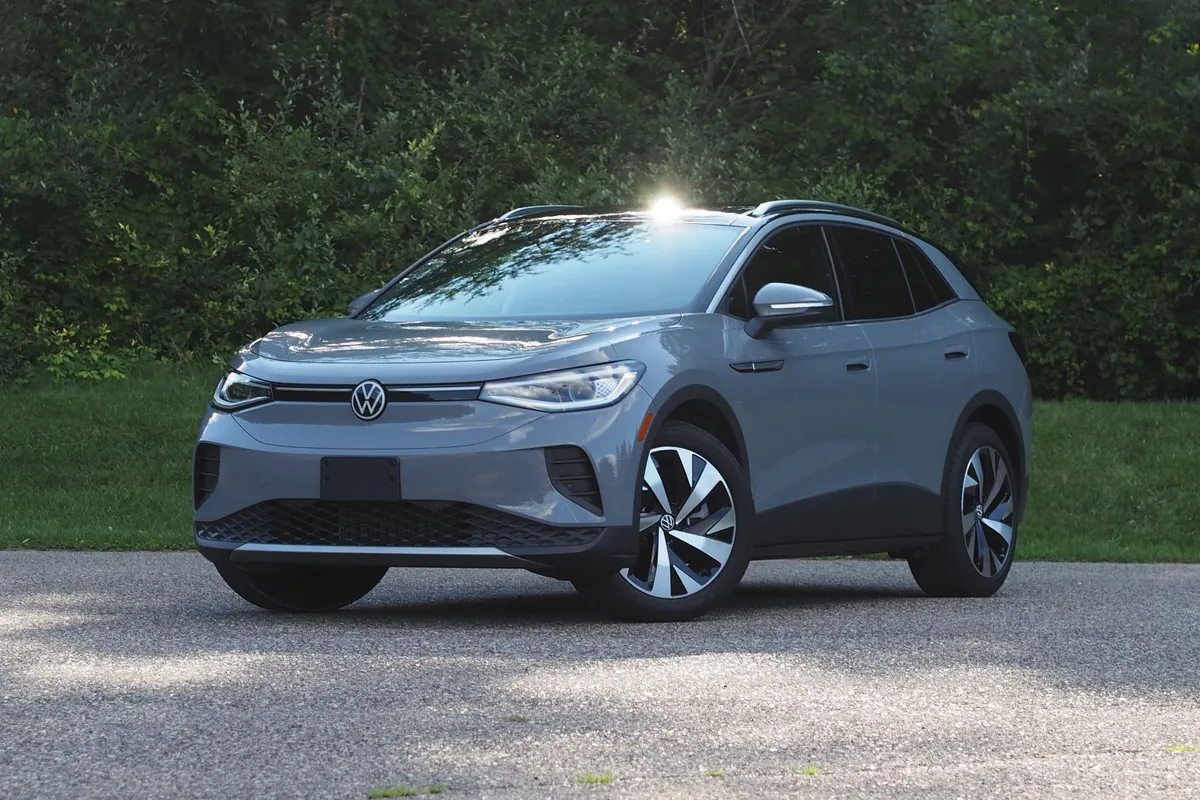If you believe electric vehicles go dormant when winter hits, it’s time to reconsider. Modern EVs are more than capable of handling snow-covered roads with confidence and control.
We’ve assembled a list of the best electric cars that not only endure cold weather but truly excel in it. These models feature advanced battery technology and all-wheel-drive systems designed to take on harsh winter conditions without breaking a sweat.
Our selections highlight vehicles that deliver impressive range and offer comfort features specifically suited to freezing temperatures—ensuring your winter driving experience remains smooth and stress-free.
Electric Vehicles That Survive Cold Winters
As electric vehicles (EVs) gain popularity, one challenge that has become increasingly evident is their performance in colder climates. While EVs offer impressive benefits like zero emissions and low operating costs, their ability to handle freezing temperatures is a concern for many.
Cold weather can reduce battery efficiency, limit driving range, and impact charging times, leaving drivers in colder regions wondering which EVs are up to the task.
In this article, we’ll explore the electric vehicles that are best equipped to survive and perform well in harsh winter conditions, from enhanced battery technologies to features designed to keep you warm and safe on the road. Whether you live in the Arctic or just face regular snowfalls, these EVs can help you navigate winter with confidence.
2025 Ford F-150 Lightning
The 2025 Ford F-150 Lightning is a standout electric pickup truck that excels in winter conditions. With a range of up to 320 miles, standard all-wheel drive, a locking rear differential, and skid plates, it’s well-equipped to handle snowy roads and rugged trails.
While towing can reduce the driving range, the truck’s impressive power and handling still make it enjoyable to drive in challenging weather. Inside, the Lightning comfortably accommodates five passengers and features a large front trunk, perfect for storing winter gear.
Additionally, it offers available heated front and rear seats, as well as a heated steering wheel, ensuring a cozy ride in cold conditions. The infotainment system is intuitive, with options for 12-inch or 15.5-inch touch screens, providing easy access to all necessary controls and features.
Originally envisioned as a temporary solution while Ford works on a completely new electric pickup, the F-150 Lightning has proven to be a highly successful adaptation of America’s best-selling truck.
With its familiar design combined with impressive electric vehicle (EV) technology, the F-150 Lightning has earned its place as our 2023 Truck of the Year.
While a redesign is expected for the 2026 model, not much change is anticipated for the 2025 version. The 2025 Ford F-150 Lightning will continue to compete with other electric trucks like the Rivian R1T, Chevrolet Silverado EV, and GMC Sierra EV.
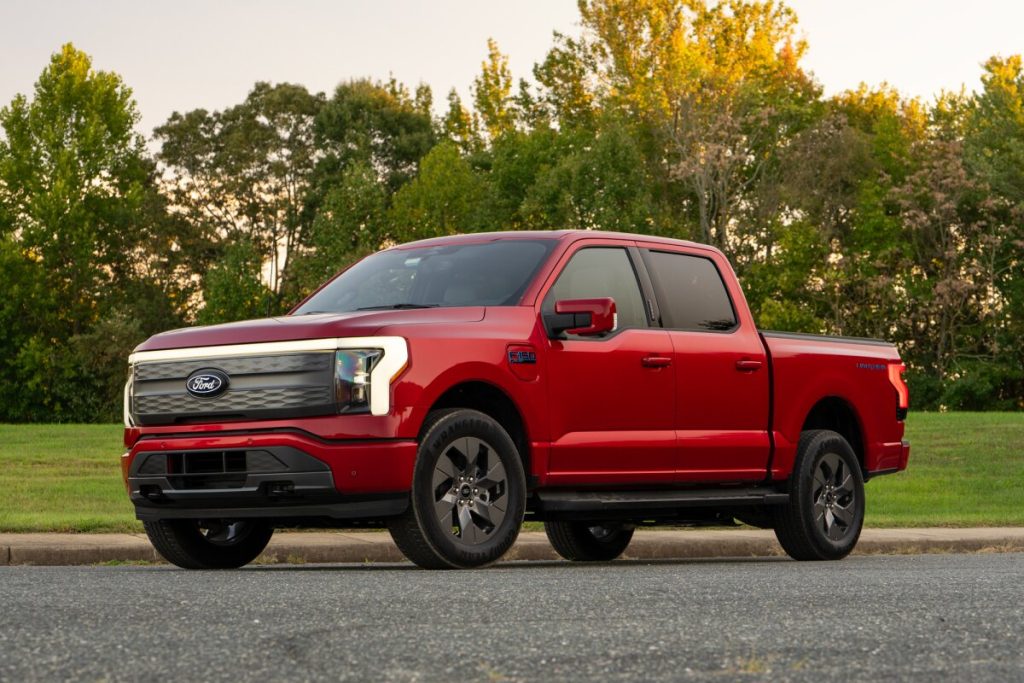
What sets the F-150 Lightning apart is how it merges traditional truck elements with cutting-edge electric performance. Its ability to offer excellent handling, true truck utility, and a thoughtfully designed interior makes it a standout.
The spacious frunk adds extra storage, giving the Lightning an edge over trucks with internal combustion engines. Additionally, the vehicle-to-load feature allows the Lightning to power tools at a job site or even provide electricity to an entire home for up to three days.
However, there are some areas where the F-150 Lightning falls short, and these issues won’t be addressed until the next-generation model arrives in 2026.
One notable drawback is its slower charging speed compared to rivals. While the Lightning has a decent range for city driving, its performance declines on long road trips. Towing capabilities are solid, but towing a trailer significantly impacts the truck’s range.
We anticipate that the 2026 redesign will improve these aspects, helping the F-150 Lightning maintain its competitive edge in the EV pickup market.
In terms of performance, range, and charging, the 2025 F-150 Lightning is expected to come standard with a dual-motor drivetrain, providing electric all-wheel drive (AWD).
The basic models will generate 452 horsepower and 775 lb-ft of torque, with a 98-kWh battery offering a range of 240 miles. In testing, the Pro model accelerated from 0-60 mph in 4.2 seconds.
Opting for the extended-range battery increases capacity to 131 kWh, boosting output to 580 horsepower while torque remains the same at 775 lb-ft. XLT and Lariat models with this battery pack will achieve 320 miles of range, while the Platinum version is rated at 300 miles by the EPA.
On the track, the Lariat Extended Range reached 0-60 mph in just 3.8 seconds. Charging rates for the extended-range battery max out at 150 kW, with even higher peak rates observed during testing. While this is considered fast charging, other electric trucks still offer higher rates.
2024 Tesla Model Y
The 2024 Tesla Model Y is an excellent choice for winter driving, particularly for those concerned about range. With a remarkable maximum range of up to 330 miles, it outperforms most other electric vehicles in this regard, offering significant peace of mind for long trips in cold conditions.
The base Model Y comes with rear-wheel drive, but all-wheel drive is standard on most trims. While its ride can feel a bit stiff, the Model Y maintains solid stability, handling corners and challenging weather conditions with ease.
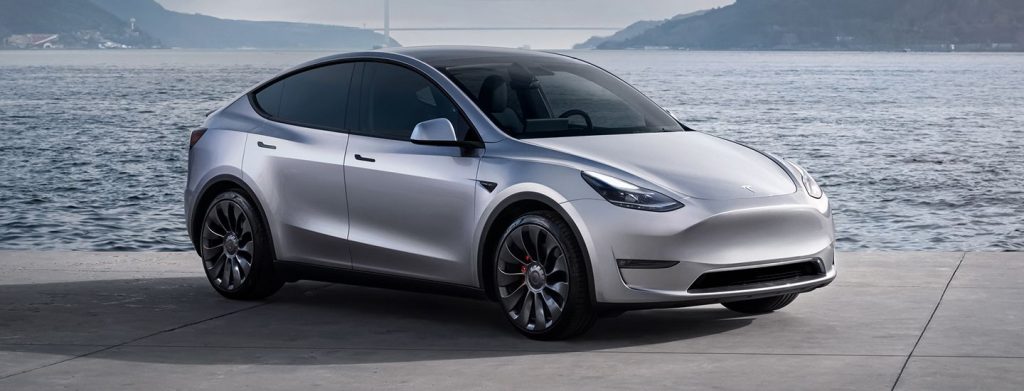
Inside, the Model Y provides spacious seating and plenty of cargo room, although the optional third row of seats can feel cramped. Standard features include heated front and rear seats, as well as a heated steering wheel for added comfort in the cold.
The vehicle also includes a 15-inch touch screen that controls most functions, though it does not support Apple CarPlay or Android Auto.
Also Read: Top 10 High-Performance Automatic Cars of 2025
2025 Cadillac Escalade IQ
The 2025 Cadillac Escalade IQ brings an electric twist to the renowned luxury SUV. Equipped with standard all-wheel drive and high ground clearance, this luxury electric vehicle handles icy roads with ease and confidence.
To ensure comfort in cold weather, the Escalade IQ comes with standard features such as heated first- and second-row seats, a heated steering wheel, and cabin preconditioning. Inside, a striking 55-inch curved infotainment display spans nearly the full width of the cabin, while a 19-speaker AKG audio system delivers exceptional sound for audiophiles.
Thanks to its advanced battery management system, the Escalade IQ maintains consistent performance even in chilly temperatures. With an impressive 460-mile range, it stands as a powerful, winter-ready luxury SUV that can accommodate up to seven passengers.
A few years ago, I became the first non-Lucid employee to drive the Air, specifically the Air Dream Edition R. This model, with 1,111 horsepower, boasted an EPA-rated range of 471 miles.
My test drive spanned two days, with day one spent tearing up Angeles Crest Highway on large 21-inch summer tires (a blast!), and day two consisting of a 408-mile journey from Beverly Hills to San Francisco on 19-inch wheels fitted with low-rolling-resistance tires.
Afterward, I joked on Instagram, saying, “Until the human bladder gets reengineered, I’m officially retired from long-range EV tests. They’re really dull to do.” It was a bit of a playful dig.
What I really wanted to do with that Lucid was drive it like I would any other car on a road trip, which I eventually got to experience with another Air, the Grand Touring Performance.
However, this experience did give me a chance to see just how quickly Lucid vehicles can charge, which, in many ways, is more important than range alone.
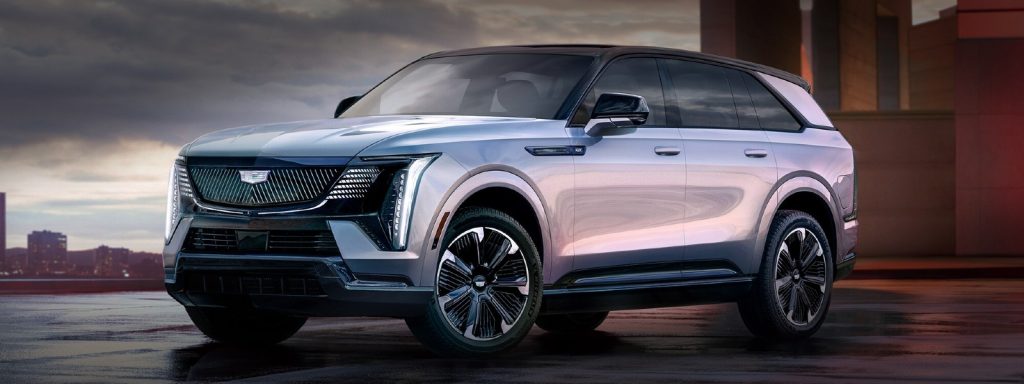
This trip in the Escalade IQ would be a blend of my previous Lucid experiences. While we wouldn’t be driving slowly, we weren’t going to be gunning it at 100 mph every chance we got. The real questions were: Would we make it? And if we needed to charge, how would that go?
One of the worst things you can do to an EV when it comes to range is drive for hours on end on a freeway. Part of what makes EVs so efficient is regenerative braking, where the motors slow the car down and recharge the battery in the process. In regular city driving, as much as a third of the energy from the battery can be recaptured through this system.
But on a wide-open, American-style road trip, those opportunities are almost nonexistent. Long-distance EV travelers quickly learn that factors like speeding, using the A/C or heater (both electric in EVs), charging devices, or playing music all drain energy that could otherwise go toward powering the wheels.
For our trip, we drove about 10 mph over the speed limit (just keeping pace with traffic, officer) the entire way. The heat, seat massagers, and Google Maps were all running, and we used Super Cruise as much as possible because, frankly, it’s awesome.
Super Cruise is currently the best hands-free driver assistance system available, and it comes standard on the Escalade IQ. Even so, using it and relying on its sensors must’ve taken a small toll on the vehicle’s range. As expected, Super Cruise performed excellently during the trip, with only one hiccup: It suddenly stopped working.
2025 BMW iX
The 2025 BMW iX is a luxurious five-seat electric vehicle that combines performance and comfort, making it an excellent choice for winter driving. The spacious cabin offers a sleek, modern design, and with standard heated front seats and a heated steering wheel, along with available heated armrests, you’ll remain warm even on the coldest days.

Equipped with all-wheel drive, the iX provides confident handling in adverse weather conditions, while its robust brakes further enhance control. The vehicle features an intuitive 14.9-inch touch screen and a 12.3-inch driver display, ensuring that key information is always within view and easy to access.
Although its high price and exterior styling may divide opinions, the iX’s impressive 309-mile range makes it a reliable companion for long road trips.
2025 Chevrolet Silverado EV
The 2025 Chevrolet Silverado EV stands out as a long-range workhorse in the electric vehicle world. With an exceptional maximum driving range of 492 miles, it is perfectly suited for long cold-weather trips.
Standard four-wheel drive ensures stability in snowy and icy conditions, while its high horsepower ratings provide versatility for both daily commutes and navigating through wintery paths. Unlike many other EVs on this list, the Silverado EV successfully combines pickup truck performance with tech-focused comfort.
Available heated front and rear seats, as well as a heated steering wheel, help keep the cabin warm. The standard 11.3-inch touch screen allows easy access to essential features, while the optional 17.7-inch screen offers additional screen real estate, though it lacks support for Apple CarPlay and Android Auto.
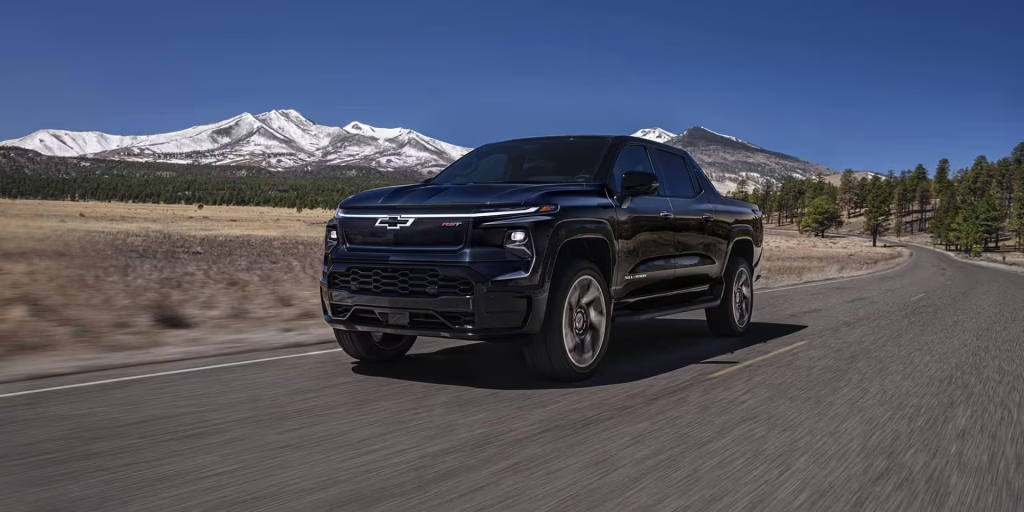
The 2025 Silverado EV is Chevrolet’s all-electric version of its popular pickup truck. While it shares the same name as the gas-powered Silverado, the two vehicles are quite different in many ways.
For instance, the Silverado EV is significantly more expensive than the traditional Silverado 1500. However, this higher price tag comes with impressive electric vehicle features. The Silverado EV generates up to 760 horsepower and boasts an estimated maximum range of 440 miles, which is exceptional.
Additionally, the Silverado EV offers some unique features not found on the standard truck, including rear-wheel steering for improved low-speed maneuverability and a practical pass-through between the bed and cab. This pass-through allows the truck to carry cargo up to 10 feet, 10 inches long when the configurable tailgate is folded down.
Also Read: 10 Cars With Best Dash Designs That Bring Innovation
Electric Cars That Struggle in Winter
Electric vehicles have been widely praised as a more environmentally friendly alternative to traditional gas-guzzling cars. However, they may not be the ideal choice for everyone.
The lithium-ion batteries that power EVs face challenges in cold weather, often resulting in a significant reduction in their driving range.
The study recommended that EV drivers adopt “a few strategic adjustments to maintain performance and safety in cold conditions.”
Tesla Model S
In 2012, the electric vehicle (EV) landscape was vastly different, with limited driving ranges, virtually no charging infrastructure, and only a few options available.
Tesla revolutionized the market with the Model S, an all-electric sedan that offered exceptional acceleration, sleek styling, and more than double the range of any other vehicle at the time.
Fast forward 13 years, and the industry has transformed, though the Model S has remained relatively unchanged, allowing other automakers to catch up and, in some cases, surpass Tesla.
For the 2021 model year, the Tesla Model S continues to provide impressive speed but has some issues with braking and steering performance.
The Tesla Model S currently ranks #13 in Best Luxury Electric Cars. Other notable electric vehicles in the same category include the Lucid Motors Air, starting at $71,400, the BMW i4 at $53,975, the Porsche Taycan at $101,395, the Porsche Taycan Cross Turismo at $113,095, and the Audi e-tron GT starting at $126,795.
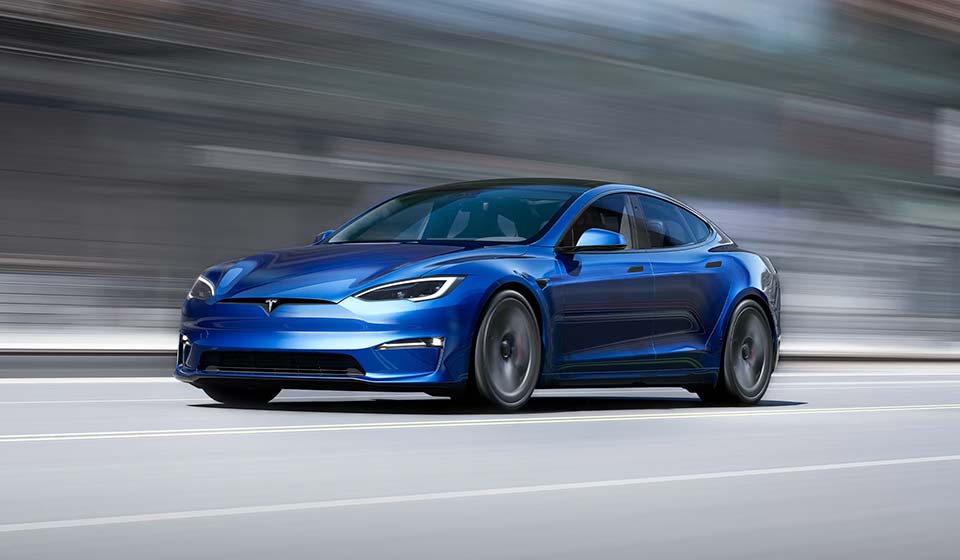
Tesla doesn’t follow the traditional carmaker’s annual update schedule and often makes revisions to its vehicles and pricing throughout the year. While there are no significant changes expected for the 2025 Model S, any updates will be reflected on the website.
The price of the 2025 Tesla Model S starts at $81,630, with higher trims like the Plaid model reaching up to $96,630. We recommend opting for the standard Model S (formerly called the Long Range), which offers an estimated 402 miles per charge.
Although the Plaid model’s high performance is tempting, it comes with a much higher starting price and only 359 miles of range. Unless you specifically want a car that can perform like a Top Fuel dragster, the base model’s 670 horsepower and greater range provide better overall value.
Volkswagen ID.4
The VW ID 4 is reasonably priced for a cash purchase, with most versions falling around the same price point as the Skoda Enyaq and being more affordable than the Kia EV6. Only the higher-end variants, such as the GTX, are notably expensive.
When it comes to PCP finance deals, the ID 4 is generally competitive, though it’s expected to depreciate faster than several of its competitors, including the Hyundai Ioniq 5, Kia EV6, and Tesla Model Y. Like all electric vehicles, the ID 4 offers minimal cost in terms of BIK tax if you choose to run it as a company car.
The more affordable Pure versions of the ID 4 can charge at speeds of up to 145kW with a sufficiently powerful public EV charger, meaning that a 10-80% charge should take approximately 25 minutes in ideal conditions.
The Pro variant charges at a rate of up to 135kW, and the all-wheel-drive models can charge at up to 175kW. However, all versions will take about 28 minutes to charge from 10-80%.
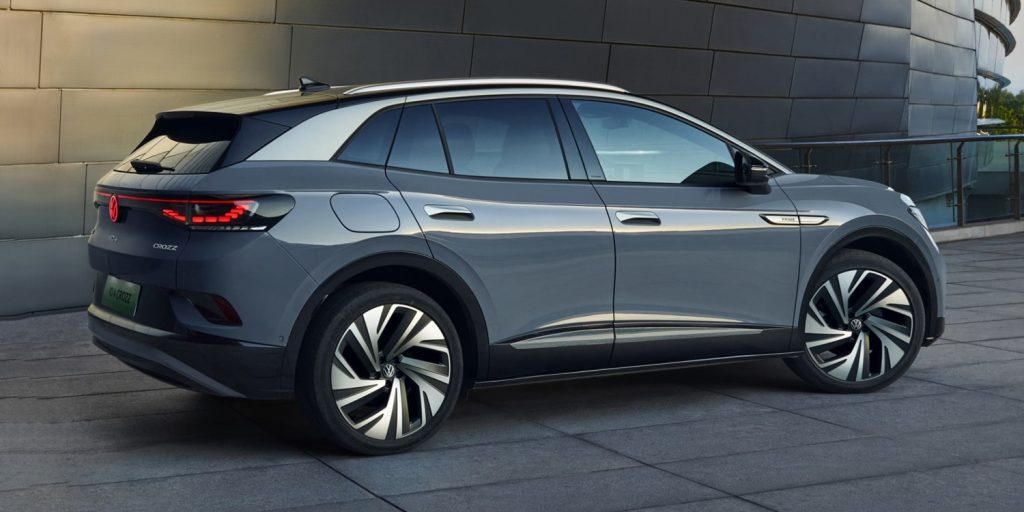
When it comes to trim options, the ID 4 keeps it simple with two choices: Match and GTX Edition. The Match trim offers plenty of standard equipment, including 19-inch alloy wheels, heated front seats, keyless entry and start, rear tinted glass, an auto-dimming rearview mirror, and dual-zone climate control.
The GTX Edition, available only with the more powerful models, comes with 20-inch alloys, matrix LED headlights, a head-up display, a panoramic glass roof, power-adjustable seats with a massage function, three-zone climate control, and sportier styling.
In terms of reliability, the ID 4 ranked 13th out of 16 models in the electric SUV category in the 2024 What Car? Reliability Survey. In comparison, the Tesla Model Y ranked first, the Kia EV6 was fourth, and the Skoda Enyaq was sixth. Volkswagen, as a brand, finished 18th out of 31 manufacturers.
The ID 4’s battery warranty lasts for eight years or 100,000 miles, while the rest of the vehicle is covered for three years or 60,000 miles. While this is adequate, Kia models offer a longer seven-year, 100,000-mile warranty.
Tesla Model X
The base Model X is equipped with two electric motors—one at the front axle and one at the rear—providing all-wheel drive. The high-performance Plaid model, which delivers 1020 horsepower, features one motor in the front and two at the rear.
While the handling of the Model X is respectable, it remains a large and heavy SUV, offering the impressive feature of rapid acceleration made possible by its electric motors.
In terms of acceleration, the base Model X is quick, with Tesla claiming it can go from 0 to 60 mph in 3.8 seconds. However, even an older and less powerful version of the vehicle surpassed that in our testing, achieving a 3.3-second run. The Plaid model, with its tri-motor setup, is claimed to hit 60 mph in just 2.5 seconds.
We have not yet tested its acceleration times at our track, but the Model S Plaid, which shares similar underpinnings with the Model X, was able to reach 60 mph in a staggering 2.1 seconds during our testing.
The all-wheel-drive Model X offers an EPA-estimated driving range of 335 miles. Opting for the Plaid model reduces this range to between 300 and 326 miles, depending on whether 22-inch or 20-inch wheels are chosen.
It’s important to note that these range estimates are based on 2024 models, as Tesla has not yet provided figures for the 2025 version. However, since there are no significant changes for the 2025 model year, we do not expect the range to differ.
Charging is swift with Tesla’s nationwide network of Superchargers. While charging at home via a 240-volt or 120-volt connection will be slower, it offers convenience for owners, and Tesla provides the option to purchase in-home charging equipment.

The Model X All-Wheel Drive boasts the highest MPGe ratings in its class, with 104 MPGe in the city and 96 MPGe on the highway, according to the EPA.
The Plaid model, despite its added power, still performs better than many competitors, including the Audi Q8 e-tron, in terms of fuel efficiency. For detailed information about fuel economy, the EPA’s website is available.
Inside the Model X, Tesla sticks to its minimalist and almost buttonless design. The driver faces a digital gauge display and uses a unique yoke-style steering controller instead of a traditional circular wheel. The yoke, however, can be challenging to operate and may take some time to get accustomed to.
Thankfully, a regular steering wheel is available as a no-cost option. Another standout feature is the Model X’s expansive windshield, which flows seamlessly into the glass roof, offering an unobstructed view of the road ahead and the sky above.
However, despite these innovative features, the Model X’s interior leaves something to be desired, especially considering its high price tag for the Plaid version. The cabin has a relatively bland aesthetic, the seats are somewhat flat, and there have been instances of poorly aligned panels and other build-quality concerns.
BMW i3
The BMW i3 remains one of the most well-rounded, innovative, and thoughtfully designed electric cars available. Despite being on the market largely unchanged since 2014, it continues to impress.
While it did receive a facelift in 2018, which included a sleeker design and the introduction of the faster i3S model, there were no major updates because it didn’t need them. But was that really the case?
It’s true that the i3 could have benefitted from more attention to its driving dynamics. The driving experience has always been a bit harsh, with a stiffer and more jittery ride than many would expect.
However, we overlooked these issues because the i3 excelled in so many other areas, offering a smart and practical approach to electric car design.
The i3 is built on a carbon monocoque, a significant investment for BMW at the time, and one that also served as the foundation for the i8 supercar. Early models came with a range extender engine to supplement the battery, but after 2018, BMW opted for a larger battery, starting at 33.2 kWh and eventually upgrading to 42.2 kWh.
While not massive by today’s standards, this upgrade provides a range of 177-193 miles, combined with quick acceleration. The standard 170-horsepower i3 can reach 62 mph in 7.3 seconds, while the more powerful 184-horsepower i3S does it in 6.9 seconds.
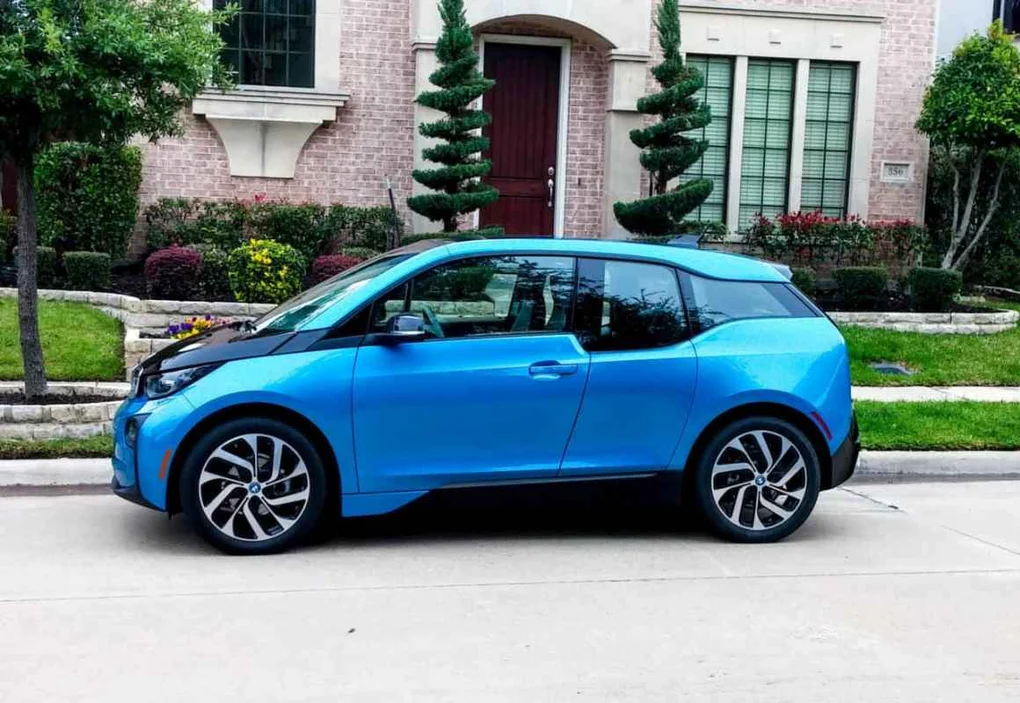
The i3S, while offering some performance enhancements, is primarily a cosmetic upgrade. It features a black roof, new bumpers, 10mm-lowered sports suspension, a 40mm wider track, 20-inch wheels that are 20mm wider, and black wheel arches.
These changes make the i3S look sportier. It also comes with Dynamic Traction Control (DTC), which is said to “enhance agility and enable controlled drifts.” And yes, it’s written in the press material. About an i3.
As for “controlled drifts,” the i3 is far from being a drift machine. Sure, if you find an ice lake, it has the right ingredients—rear-wheel drive and a rear motor—but that’s not the point.
The key factor that makes the i3 such an efficient and nimble car is its weight. Weighing only 1,270 kg, thanks to its carbon construction, it’s significantly lighter than comparable cars, like the smaller Honda e, which weighs about a third of a tonne more.
This leads to an interesting question: where does the i3 fit in the market? It’s larger than a typical city car, more comparable in size to a Golf than a Polo or Up. The i3 shows that electric vehicles can challenge conventional car categories, and it has done so more effectively than most.
Inside, the i3 boasts a fresh, modern interior that’s one of the best among any cars on the market today. It comfortably accommodates four adults, and the boot provides ample space. It’s the perfect size to serve as a second car for most families, striking a balance between practicality and cutting-edge design.
Nissan Leaf
The Nissan Leaf is a solid option for those looking to enter electric vehicle ownership, offering good performance and an attractive design. However, if you want the version with the best range, you’ll need to spend a bit more.
The days of electric cars being seen as a novelty are long gone. Now, owning an EV is more about making an environmentally conscious decision than about making a statement, similar to using a reusable face mask – it’s a responsible choice, but no longer a standout one.
Even so, the Nissan Leaf still makes a statement with its angular front end, smooth grille-less bumper, and optional contrasting roof.
It features a few subtle blue highlights, which allude to its electric nature, though the design remains understated. If you’re after a more obvious signal that you’re driving an electric car, a Volkswagen ID3 might be more your style.
Inside, the Leaf follows a similar trend, offering a simple, well-organized cabin. While the entry-level models may look fairly plain, higher-spec versions include partial leather seats with blue stitching, adding a touch of flair.
When it comes to technology, the Leaf offers a range of standard features. You get sat-nav, smartphone mirroring, and a digital driver’s display without any extra cost. However, the 8.0-inch touchscreen could be faster to respond, which is a minor drawback.
The passenger space is spacious enough for four adults to sit comfortably, though three in the back might feel a bit more cramped compared to the e-Golf. The boot also offers a good amount of space for a small family hatchback.
The two available battery options offer different ranges. The standard 148bhp model can travel up to 168 miles on a full charge, while the higher-spec 214bhp Leaf e+ can go up to 239 miles. However, in real-world conditions, factors such as driving style, temperature, and terrain can affect how close you get to these official range estimates.
Charging is reasonably straightforward, with a 7kWh charger taking about 6.5 hours to charge the car from empty to full at home. If you’re using a 50kW rapid charger, you’ll get from 20% to 80% in around 60 minutes with the standard model, or 90 minutes with the e+ version.
If you’re looking for an affordable electric car that’s comfortable and has a decent-sized boot, the Nissan Leaf is a solid choice. It’s also ideal if you have easy access to charging, as it offers low running costs.
The electric motor in the Leaf operates nearly silently while cruising, which makes it great for motorway trips for a relatively small electric vehicle. It handles wind and tyre noise well, and the suspension smooths out bumps effectively.

The Leaf also offers quick off-the-line acceleration, making it punchy enough to zip through city traffic, regardless of the model. The high driving position and large windows provide excellent visibility, making it easy to maneuver around town.
Additionally, the Leaf is equipped with a range of safety features to help prevent accidents. The optional Pro Pilot feature can even handle acceleration, braking, and steering on motorways, making long drives less stressful.
In conclusion, the Nissan Leaf is a good family car, and adding some extra features can enhance its appeal. With regular access to charging, it offers affordable running costs, making it a great choice for those looking to move to an electric car.

